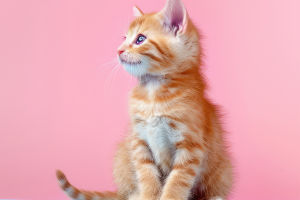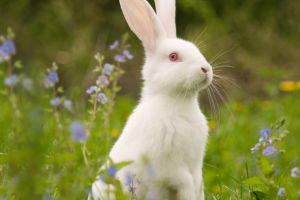As anyone who has spent time with cats knows, our feline companions are mysterious—much more so than those other furry family members.
Here, John Bradshaw, author of Cat Sense (Basic Books, 2013), answers a selection of questions submitted by Scientific American editors and Twitter followers about the cat’s many quirks.
Bradshaw is a visiting fellow at the University of Bristol School of Veterinary Sciences in England, where he studies the behavior and welfare of cats and dogs, as well as their interactions with people.
Are cats less domesticated than dogs? Are they becoming more domesticated over time?
Cats are far more similar to their wild ancestors than dogs are to wolves, so in that sense, dogs are the more domesticated of the two species. As they adapted to living alongside humans, cats became more sociable with one another and more accepting of people, but there is no evidence that they have changed much beyond that over the past few thousand years.
Will cats, which require meat, eventually evolve to eat a broader array of foods as dogs do?
Cats and dogs belong to the Carnivora group, with both species’ wild ancestors primarily eating meat. DNA analyses show that dogs have evolved to be more omnivorous due to increased copies of the amylase gene, helping them break down starch.
Why do cats purr?
Cats purr because they want attention, usually translated as "please keep still and pay attention." Kittens purr to encourage their mothers to keep nursing, and pet cats purr when they want to be stroked. The calming vibrations from purring have a soothing effect on humans, but sick cats also purr as a call for help. So, purring doesn’t always mean happiness. Some believe the vibrations from purring may even help heal damage in injured cats.
How do they purr?
The purr is unique. Unlike other vocalizations, it’s made by rattling the vocal cords together, not by vibrating them with air. Cats can purr while breathing in and out, unlike humans.
Why do house cats have so many vocalizations compared with wildcats?
House cats are much noisier than feral cats, although they don’t have as many vocalizations as some other species. For example, the jungle cat has a few vocalizations not heard in domestic cats. The classic meow is rare in feral cat colonies, except when mothers communicate with their kittens.
Do cats think of their owners as parents? Siblings? Friends?
When cats greet us by rubbing around our legs, it shows they view us as friendly but with a slight sense of superiority. In a family group, kittens rub against their mothers, females rub against males, and smaller cats rub on bigger ones. This rub exchange shows a subtle imbalance of power in relationships.
How can you get a cat to love you?
Cats naturally feel affection for those who care for them, though they don’t always show it. Trust is harder to gain with nervous cats. One trick is to let the cat approach you, rather than forcing yourself on it. Rewarding it with treats when it approaches and allowing it to leave when it wants helps build trust. Over time, it will likely come to you more quickly and stay longer.
The Ultimate Guide for First-Time Cat Owners
Video by GIANT GEMS CATTERY
Why do cats sometimes suddenly bite or scratch the person who is petting them?
This behavior usually happens when the cat has had enough but didn’t communicate it clearly. Cats that enjoy being petted may tire of it quickly.
Can cats get jealous?
Like dogs, cats can experience jealousy when they see another individual receiving the attention they crave. However, cats likely don’t remember the jealousy once the moment has passed. Both cats and dogs have a limited sense of time, recognizing short intervals but struggling with longer ones.
Do cats remember different people or just the people they see on a daily basis?
Although no study has directly focused on this, cats seem to forget other cats after a long separation, so the same likely applies to people.
Do coat colors and patterns correspond to certain personality traits in cats?
While many owners believe that coat color predicts a cat's personality, there’s no universal evidence for this. However, specific breeds do exhibit characteristic personalities. For example, oriental breeds tend to be active, while exotics are more laid-back. Hybrid cats, like Bengals (a mix of domestic cats and wild Asian leopard cats), have stronger breed-specific personalities, often being more adventurous.
Why do cats bring their kills to their humans?
Although it might seem like a gift, cats bring their kills to a safe place to eat them. If the kitchen is near, they may abandon the catch once reminded of tastier food, like commercial cat food.
Why do they knock objects off tables and shelves?
Some cats are simply clumsy, while others bat objects off edges to get their owner's attention or for their own amusement. In some cases, they learn that this behavior entertains their owners.
Do indoor cats suffer from not being able to go outside?
Cats that have lived indoors all their lives likely don’t miss what they’ve never experienced. However, outdoor cats that are suddenly confined may experience stress. It’s essential to provide indoor cats with stimulation, such as hunting games with toy prey.
Why are cats so finicky about food and their litter boxes? Why are they so sensitive to any change in routine?
Cats have precise nutritional needs, so they’re careful about what they eat. They also prefer to hide their feces to avoid detection by predators or prey, making them reluctant to use a dirty litter box. Cats are highly sensitive to changes in their environment, as they are territorial animals that find security in their family.


